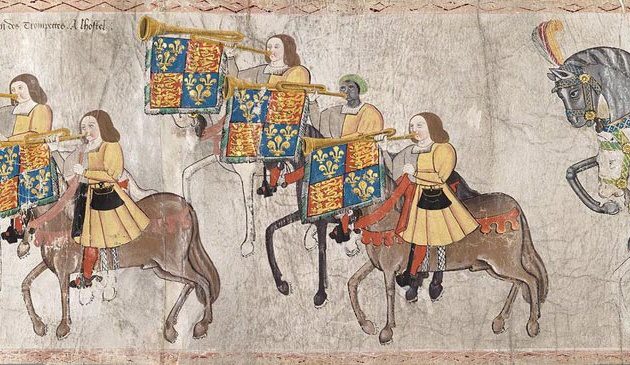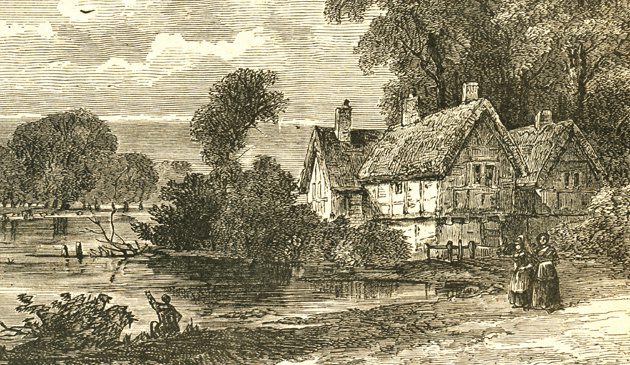Sir Thomas Gresham

By then the Gresham family had moved to a new home in the city. What was initially a modest home was extended at great cost into the much larger Gresham House. Tragedy struck in 1564, however, when Thomas and Anne’s son died in a riding accident. Without a male heir, and already in poor health, Thomas decided to use some of his large fortune to create a lasting legacy for the general good, reviving his father’s idea of a public building where businessmen could carry out transactions to rival the bourse of Antwerp. A site was chosen at the junction of Cornhill and Threadneedle Street, and over £3,700 raised by subscription to purchase and demolish 38 houses.
Gresham laid the foundation stone in June 1566 and then oversaw the project during the following three years, together with his friend Richard Clough. The building was designed by an architect from Antwerp in the Renaissance style, with materials and workmen brought from Flanders. For that, the City authorities relaxed their rules on foreign labourers and a special guard had to be kept to protect the workers from enraged London craftsmen. Building work began in summer 1567, using 100,000 bricks donated by the City, together with imported stone for its facing, and completed at the end of the year.
The new Exchange consisted of an arched courtyard around which were statues of English monarchs. A gallery of around 150 small shops and offices was supported on marble columns, very similar to a Roman forum. There was a bell to summon merchants, topped by Gresham’s symbol of a grasshopper, and free concerts performed each Sunday during the summer from a tower.
Initially the idea was slow to take off and it took some years before the building was fully used. In January 1571 the Queen visited to officially open the Exchange, having first dined with Gresham at his home. In order to improve the look of the Exchange for the royal visit Gresham persuaded additional merchants to take space by offering free or reduced rents. The market was given a royal charter and thereafter renamed the Royal Exchange.
Antwerp’s golden period as the cultural and financial centre of Europe ended when a large part of the Protestant population fled following a siege in 1585 by the Catholic Spanish. Many of the bankers emigrated to London and thus enhanced the city as a major European finance centre.
Nearly a hundred years after its foundation, the original Royal Exchange was a victim of the Great Fire. The statues of monarchs were destroyed but that of its founder survived. The Exchange was subsequently rebuilt on two occasions and its successor, built in the 1840s facing the Bank of England and Mansion House, continues today as an upmarket shopping centre.
Even before the completion of the new exchange Gresham was considering other lasting legacies. Eight almshouses were constructed behind his mansion at Bishopsgate. Other than the law schools in the Inns of Court, London lacked a university such as those at Oxford and Cambridge. Gresham therefore arranged that after his death, which occurred in November 1579, Anne should continue to enjoy their home but after she passed away it would be converted into an educational college. From that time the rents from the Royal Exchange would pass to the City of London Corporation and the Mercers’ Company to employ and accommodate seven professors at Gresham College to each lecture on a particular science (astronomy, geometry, medicine, law, divinity, rhetoric and music), one per day of the week. Lectures began in 1597.
Gresham College survived the devastation of the Great Fire and for a short period temporarily housed the Royal Exchange, as well as the base for the City of London Corporation while the Guildhall was being rebuilt. For a period of time in the late 17th century Gresham College was also the home of the Royal Society, the group of men, including Sir Christopher Wren and Isaac Newton, with an interest in various forms of science and technical innovation. Lectures continued on the same premises until 1768 and thereafter at various locations in the City until the opening of new premises in Gresham Street in 1842. In 1991 it moved to the ancient Barnard’s Inn at Holborn where free lectures on many subjects continue to be given by learned speakers. The Lord Mayor of London is the president of Gresham College.
Thomas Gresham also built a mansion at Osterley Park that still survives, although largely rebuilt in the 18th century. Queen Elizabeth once dined with him there during which local residents held a protest by tearing up fences, angered by Gresham having enclosed areas of land. After his death in November 1579 he was buried at St. Helen’s Bishopsgate, with a still-extant tomb that may have been shipped from Antwerp.
The economic principle ‘Gresham’s Law’ was named after Thomas Gresham during the 19th century although it does not have any direct connection with him. The Gresham family symbol of the grasshopper continues to be used by Gresham College and on the weather vane of the Royal Exchange.
Sources include: The Oxford Dictionary of National Biography; Liza Picard ‘Elizabeth’s London’; Adrian Tinniswood ‘By Permission of Heaven’; Fiona Rule ‘London’s Docklands – A History of a Lost Quarter’; Arthur Bryant ‘Liquid History’; T.H.Lloyd ‘England and the German Hanse’; Caroline Barron ‘London in the Later Middle Ages’; John Schofield ‘London 1100-1600’.
< Go back to Tudor London


